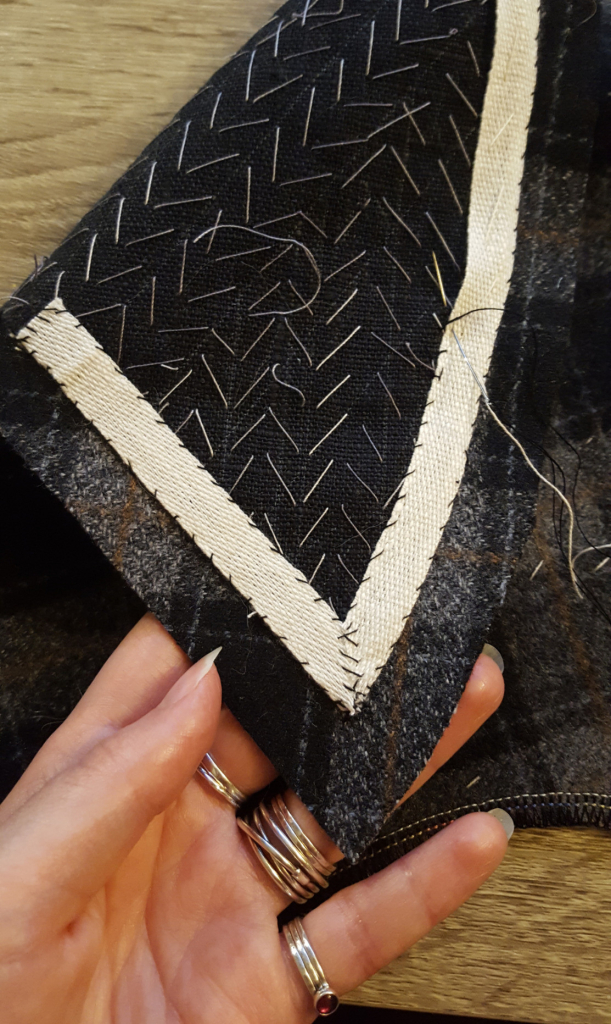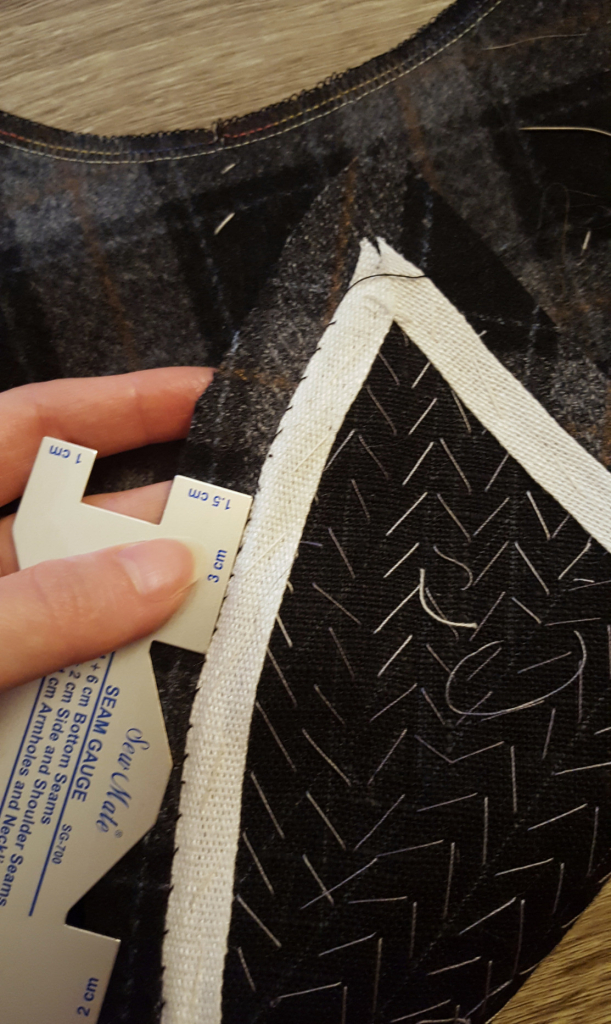Putting on the linen tape on the edges of the canvas. The canvas is trimmed a bit beyond the future seam line, and then the tape gets put on, exactly at or slightly outside the seam line. Here I've been checking my placement with a seam gauge because I'm in that sort of mood. 😄 Then that all gets sewn down, the canvas won't move at all with nothing visibly attaching it, and the front and lapel won't stretch and will feel a bit more sturdy. Not necessary, but nice!
#Sewing #Tailoring #1890sCheckJacket
#Sewing #Tailoring #1890sCheckJacket



Sini Tuulia •
These are also the things that make bought tailoring cost oodles of money despite usually not being visible. I've been doing pretty much nothing else today except these lapels, I'm fairly fast at it, and they're not close to done yet!